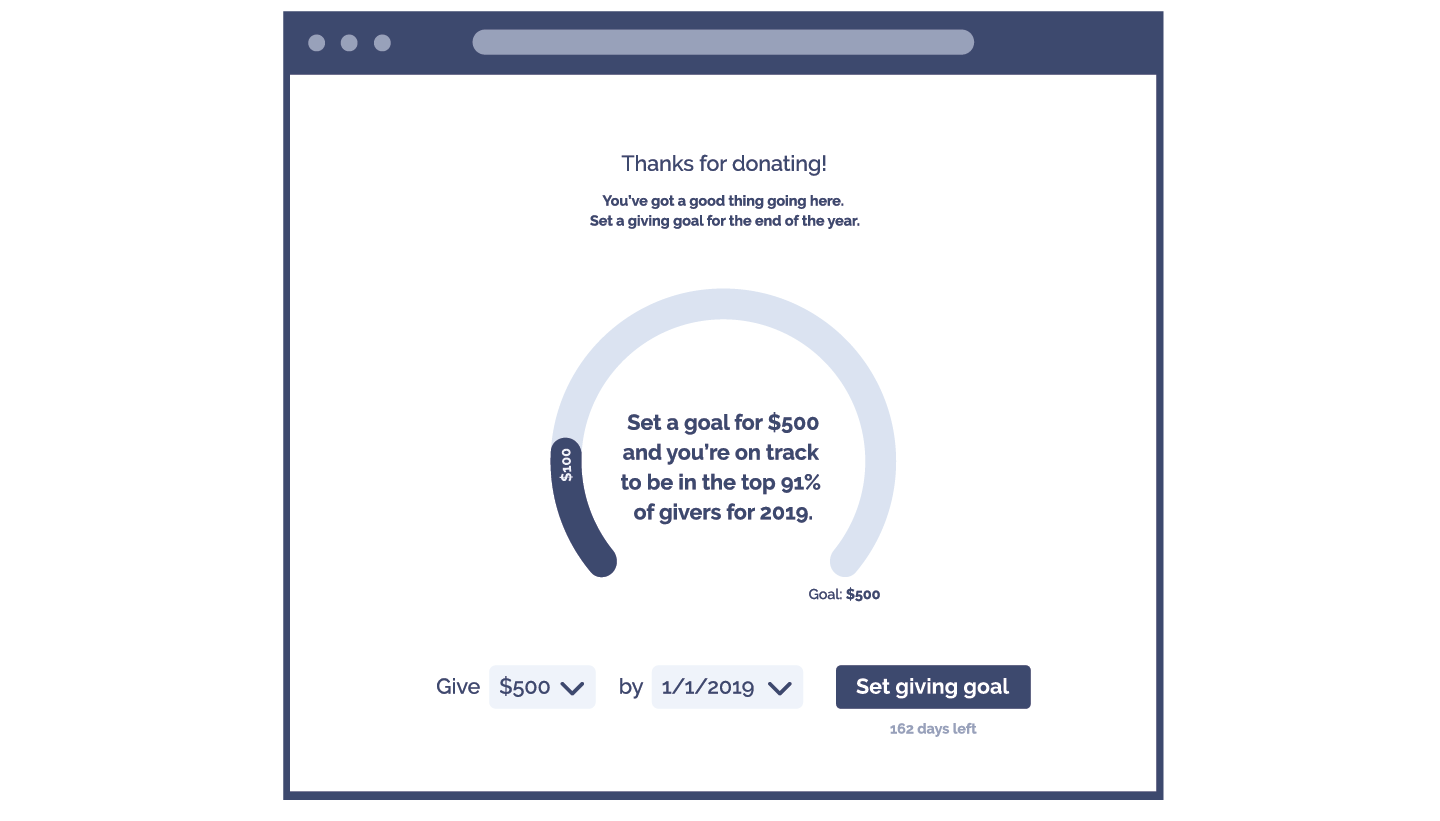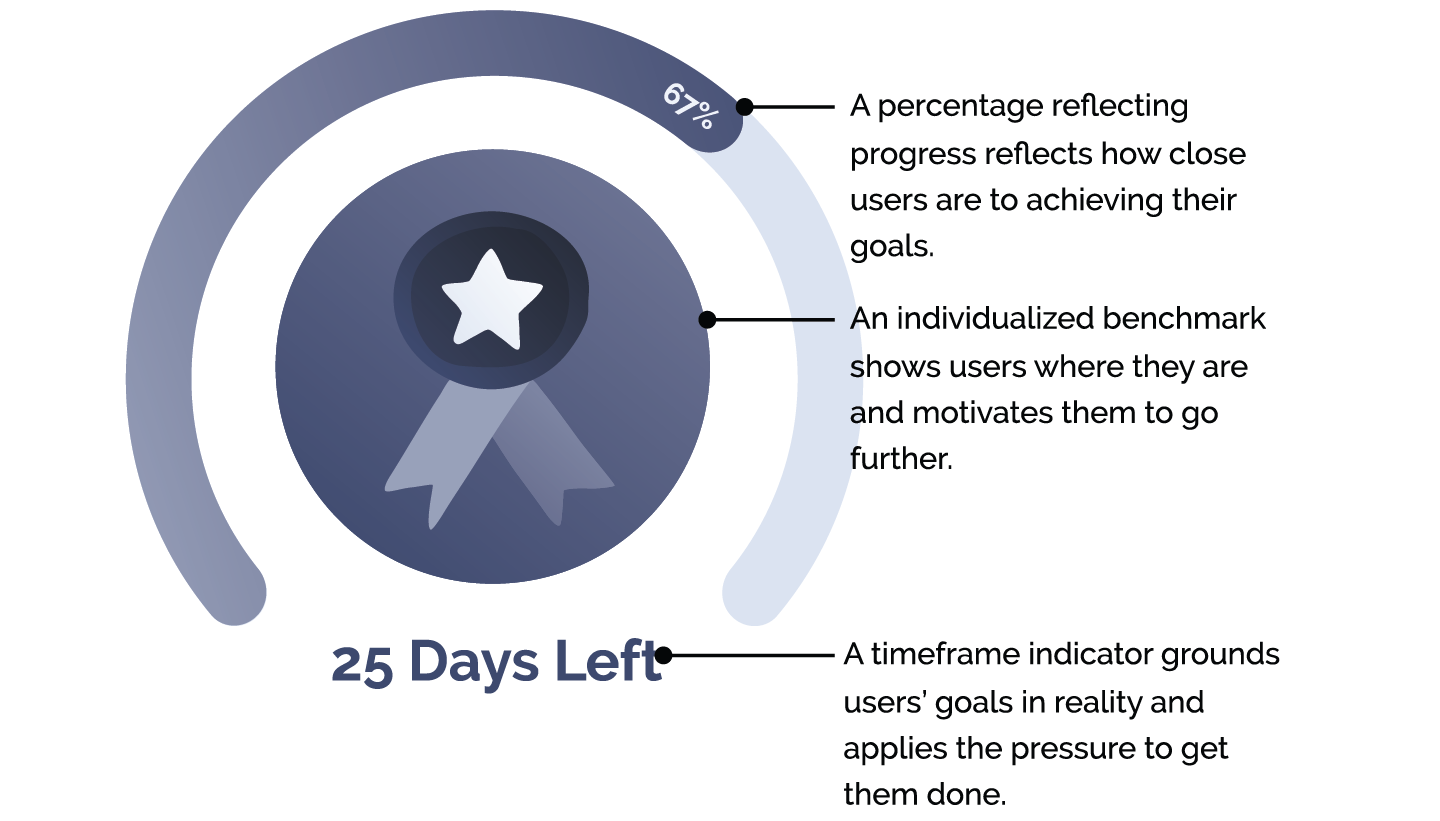Adaptive Giving Goals


Better Giving Studio developed this concept during a product sprint led by Intentional Futures, which focused on leveraging giving research and translating it into high level product concepts.
The Opportunity
Workplace giving platforms have the opportunity to make giving easier and more efficient for both donors and nonprofits. Many of these platforms offer features such as the ability to make gifts through regular paycheck deductions and employer matching for any contributions.
However, giving on workplace platforms is still mostly reactive. And employees often see it as a final administrative step to secure a match, rather than as a tool for making more intentional gifts. Adaptive Giving Goals help donors structure and manage their total yearly giving by providing accurate feedback on their typical giving to setting realistic and achievable goals. Note: while this product sprint used a workplace giving context as its inspiration, the concept of adaptive giving goals can be applied to any online giving platform
The Concept
Goal-setting is a well-established theory of employee motivation that has been shown to improve performance in many contexts. The concept has also been explored in altruistic settings, and has been found to increase donation amounts in end-of-year workplace giving. An RCT performed on a workplace giving platform in the last 6 weeks of 2017 found that exposing users to a goal-setting tool increased their average donation amount. This concept leverages an insight from goal gradient theory, which states that there is the tendency to more actively pursue a goal the closer a person is to achieving it.
Based on this insight, the first step in effective goal setting would be immediately showing users their progress towards that goal—the equivalent of starting a loyalty coffee card with two stamps already filled out. Additionally, if the user is underperforming in relation to their goal over the course of the year, goal-gradient behaviour would imply that lowering the total to reduce the distance to the goal should motivate goal achievement behavior. Many health and fitness apps do just this. For example, when a user consistently doesn’t get in 10,000 steps/day, the goal might be lowered to 8,000.
Adaptive Giving Goals put these principles to work by inviting users to set a goal for the remainder of the year, immediately after making their first donation. That goal-setting prompt already includes a visual display of their progress, including the amount of the donation they just made. The tool then reminds users of their goal leading up to prominent giving moments, such as #GivingTuesday. If they’re not on track to hit that goal, it’s reduced. The tool notifies the user with visual feedback showing them closer to meeting their updated goal.
Making the goal more attainable brings the donor closer to achieving it. It activates the donor’s drive to pursue a reachable goal. And donors who hit their goal can also be offered a new stretch goal to motivate them to continue giving.
This concept may be adopted, remixed, or used as inspiration for or in conjunction with existing platforms, following these attribution guidelines.
Explore Further
This concept can be adopted, remixed, or used as inspiration for your own innovation efforts. Follow the Creative Commons guidelines below.
